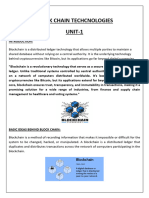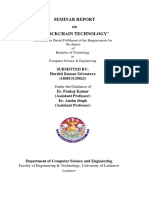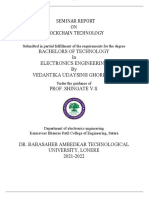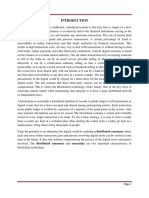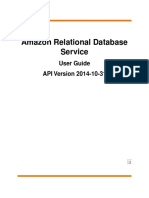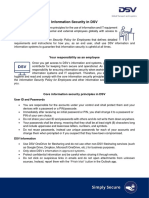0% found this document useful (0 votes)
63 views14 pagesBlockchain Real
The document discusses the history and working of blockchain technology and cryptocurrency. It provides an overview of blockchain, how transactions are stored in blocks and added to the chain, and highlights advantages like decentralization, integrity, traceability and simplification. The document also includes an acknowledgment and references section.
Uploaded by
Kartik B HCopyright
© © All Rights Reserved
We take content rights seriously. If you suspect this is your content, claim it here.
Available Formats
Download as PDF, TXT or read online on Scribd
0% found this document useful (0 votes)
63 views14 pagesBlockchain Real
The document discusses the history and working of blockchain technology and cryptocurrency. It provides an overview of blockchain, how transactions are stored in blocks and added to the chain, and highlights advantages like decentralization, integrity, traceability and simplification. The document also includes an acknowledgment and references section.
Uploaded by
Kartik B HCopyright
© © All Rights Reserved
We take content rights seriously. If you suspect this is your content, claim it here.
Available Formats
Download as PDF, TXT or read online on Scribd
/ 14
















